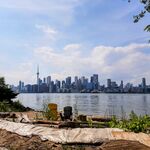Memph
Active Member
I really think having more incremental intensification in the GTA would be nice. Most of the developments are rather large scale, either big highrise projects or big subdivisions.
For the last little while, I've had an interest in Montreal's mid-century urbanism. It has a lot of places that had their first phase of growth in the early 20th century, followed by a second phase of growth around 1945-1965. In some cases, there was actually very little there before WWII. But while Toronto was mostly building bungalows in Scarborough, North York and Etobicoke, and a bit later, big apartment complexes like St James Town, or the apartments North of High Park, Montreal was building a lot of small walk up apartments.
Despite having been built in the mid 20th century, not a time the average person associates with great urbanism and architecture, and the fact that many of these areas were pretty poor, I think they turned out pretty well.
Examples:
http://goo.gl/maps/fNQrA
http://goo.gl/maps/dcjCZ
http://goo.gl/maps/LNqUy
http://goo.gl/maps/Y7NlW
I think this would be a great way to urbanize many parts of the city without causing as many problems of "not fitting into the neighbourhood".
In addition to being more human scaled, this kind of development could potentially create more affordable apartments than highrise construction, although that would probably require more flexible parking requirements and a smoother approval process.
For the last little while, I've had an interest in Montreal's mid-century urbanism. It has a lot of places that had their first phase of growth in the early 20th century, followed by a second phase of growth around 1945-1965. In some cases, there was actually very little there before WWII. But while Toronto was mostly building bungalows in Scarborough, North York and Etobicoke, and a bit later, big apartment complexes like St James Town, or the apartments North of High Park, Montreal was building a lot of small walk up apartments.
Despite having been built in the mid 20th century, not a time the average person associates with great urbanism and architecture, and the fact that many of these areas were pretty poor, I think they turned out pretty well.
Examples:
http://goo.gl/maps/fNQrA
http://goo.gl/maps/dcjCZ
http://goo.gl/maps/LNqUy
http://goo.gl/maps/Y7NlW
I think this would be a great way to urbanize many parts of the city without causing as many problems of "not fitting into the neighbourhood".
In addition to being more human scaled, this kind of development could potentially create more affordable apartments than highrise construction, although that would probably require more flexible parking requirements and a smoother approval process.




